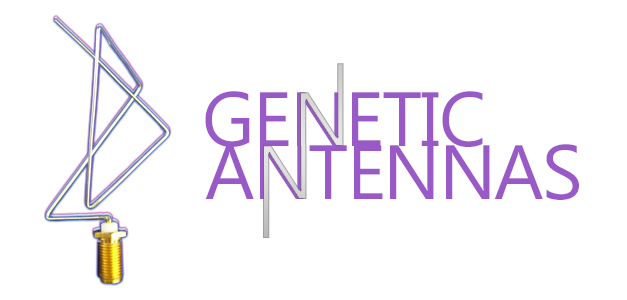
First appearing in the 1990s, genetic antennas, also known as “evolved antennas,” resemble intricately bent paperclips attached to a radio frequency connector. They are designed entirely by an optimization algorithm, which can be a genetic algorithm or some other iterative method, having no input to their theory of operation by a human engineer.
Genetic antennas go through “Evolutions.”
Similar to manually designed custom antennas, it often takes multiple attempts and iterations to come up with the most optimal genetic antenna design for the specified application. However, genetic antennas are not existing designs modified by optimization. Rather, each iteration, designed entirely by a computer, is a new antenna altogether.
To design a genetic antenna, the computer program starts with rather simple shape. Using its own calculations and algorithms, the program modifies the shape, either by adding or reshaping elements. These new characteristics will have different effects on the antenna’s performance. After the said modifications, a new shape, thus, a new antenna, is formed. These new shapes are essentially different “evolutions” of the original antenna.
After a good number of second-generation antennas are developed, each one is evaluated to determine how well they fulfill the design requirements; they are assigned a numerical score accordingly. The antennas with the worst performance scores are then discarded. This process of eliminating the poorest performing candidates and keeping the best performing candidates, mirrors Charles Darwin’s concept of “natural selection.” The computer then repeats the procedure of modifying elements, this time, using the best performing candidates from the second generation.
Essentially, the computer program develops multiple generation of antennas until it finds the best performing antenna. The resulting shapes are often very complicated and difficult to conceptualize by human engineers.
Latest Posts

Hedy Lamarr: The Hollywood Actress Who Changed Wireless Technology
This Women’s History Month, we wanted to highlight the life and career of Hedy Lamarr, a famous Hollywood star whose lesser-known achievements include essentially laying the foundations for the spectrum-hopping technology we know today as WiFi.

Living Legends: James West and Jesse Russell
Every February, JEM Engineering honors the the African American Engineers who have made lasting contributions in STEM. This year, we’re excited to spotlight two living legends: James Edward West and Jesse Eugene Russell.
